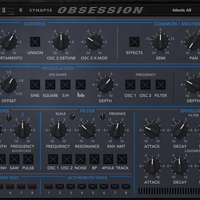
I have had a personal reaction to certain tools, though, and too often in reviews, we don’t get to talk about that subjective experience. Even when they perform tasks in very different ways, any number of tools can achieve the same results. It’s worth saying that we have a lot of exceptionally good choices from which to select tools. With lots of affordable alternatives – not to mention competition from stable, previous versions – the question with any full-freight, top-of-the-line DAW is whether it can “buy” your loyalties with enough extras? And, for that matter, might it even convince you to enjoy running Windows? SONAR has tempted me before, but 8.5.2 reaches a new level of maturity – and a new level of pack-in goodies to sweeten the deal.Ĭhoosing a DAW is an immensely personal decision. When it comes to finishing a track from beginning to end – not doing live PA-DJ hybrid performances or racking up modular synths and effects or programming intricate cellular beats – sometimes the conventional approach can be welcome. There’s something to be said for the traditional digital audio workstation, its linear arrangement view, and all its editing bells and whistles. “Point five” may sound like a minor update, but – particularly with the polish added in 8.5.2 – it brings a lot to the table. After the sonarProperties block has been evaluated, values are converted to Strings as follows: Collection values are (recursively) converted to comma-separated Strings, and all other values are converted by calling their toString() methods.īecause the sonarProperties block is evaluated lazily, properties of Gradle's object model can be safely referenced from within the block, without having to fear that they have not yet been set.The traditional Digital Audio Workstation still has plenty of appeal when it comes to polishing tracks and scores. To facilitate their manipulation, values still have their “idiomatic” type (File, List, etc.). Furthermore, all properties that have been configured up to this point, including all properties preconfigured by Gradle, are available via the properties accessor.Įntries in the properties map can be read and written with the usual Groovy syntax.

As we have already seen in the examples, the property() method allows you to set new properties or override existing ones. # gradle.propertiesįirst, include the scanner in your build in adle: plugins block. Be aware that the scanner uses system properties so all properties should be prefixed by systemProp. A good place to configure global properties is ~/.gradle/gradle.properties. Installation is automatic, but certain global properties should still be configured.
#Sonar 8 beatscape tutorial android#
At least the minimal version of Java supported by your SonarQube server is in useīytecode created by javac compilation is required for Java analysis, including Android projects.
#Sonar 8 beatscape tutorial manual#
By preconfiguring the analysis based on that information, the need for manual configuration is reduced significantly.

The Gradle build already has much of the information needed for SonarQube to successfully analyze a project. The ability to execute the SonarQube analysis via a regular Gradle task makes it available anywhere Gradle is available (developer build, CI server, etc.), without the need to manually download, setup, and maintain a SonarQube Runner installation.

The SonarScanner for Gradle provides an easy way to start SonarQube analysis of a Gradle project.


 0 kommentar(er)
0 kommentar(er)
